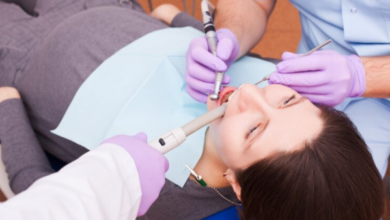
Cervical spondylosis is a common age-related disorder, which refers to the degradation of the spinal discs in the neck. While it may not always lead to symptoms that can be easily noticed, neck pain stands prevalent and gets quite often a bothering condition.
Understanding and analyzing the bond between cervical spondylosis and neck pain is essential for individuals seeking to manage their symptoms in an effective way.
Anatomy of Cervical Spondylosis:
Cervical spondylosis primarily leaves an impact on the cervical spine, which is the section of the spine situated in the neck.
The cervical spine contains seven vertebrae (C1 to C7), that stand separated by intervertebral discs. These discs act as soft cushions that absorb shock and provide flexibility to the neck.
Degenerative Changes:
As individuals age, the intervertebral discs can undergo degenerative changes. The discs suffer the loss of water content, becoming less moldable and more prone to wear and tear. Additionally, the bones in the spine (vertebrae) may develop bone spurs or osteophytes, which further contributes to the degradation.
Can Cervical Spondylosis Cause Neck Pain?
Yes, cervical spondylosis can cause neck pain. The degradation of the intervertebral discs and the formation of bone spurs or osteophytes, can impact the surrounding structures, resulting in various signs, with neck pain being a very common complaint.
Mechanisms of Neck Pain in Cervical Spondylosis:
1. Disc Degeneration:
As the discs degenerate, they provide less cushioning between the vertebrae. This can lead to increased pressure on the facet joints, contributing to neck pain.
2. Bone Spurs:
Bone spurs, also termed as osteophytes, form on the vertebrae and can impinge on nerves or the spinal cord. This compression can lead to pain, tingling, or numbness radiating into the neck and upper extremities.
3. Herniated Discs:
In some cases, degenerated discs may herniate, meaning the inner gel-like substance protrudes through the outer layer. This herniation can compress nearby nerves, causing pain in the neck and possibly radiating down the arm.
4. Facet Joint Dysfunction:
Facet joints, which connect the vertebrae, can become inflamed or irritated due to increased stress from disc degeneration. This can contribute to localized neck pain.
5. Muscle Tension:
The body may respond to structural changes by increasing muscle tension in an attempt to stabilize the neck. This muscular tension can lead to stiffness and discomfort.
Symptoms Beyond Neck Pain:
While neck pain is a common symptom of cervical spondylosis, other signs may also show up, including:
- Headaches:
Pain may radiate from the neck into the head, leading to tension headaches.
- Numbness and Tingling:
Compression of nerves can give you a feel of sensations of numbness and tingling, often extending into your arms and hands.
- Weakness:
Muscle weakness may appear, particularly in severe cases where nerve compression is significant.
- Limited Range of Motion:
Stiffness and reduced flexibility in the neck can be observed.
- Pain with Movement:
Certain movements, such as turning the head or looking up or down, may increase the pain.
If you are experiencing any of these symptoms, do look out for the best neck pain specialist doctor in Delhi.
Diagnosis and Treatment:
If neck pain is suspected to be in relation with cervical spondylosis, a healthcare professional may carry out a thorough check. This can involve a physical examination, imaging studies (X-rays, MRI, or CT scans), and a review of past medical records.
Treatment methods for cervical spondylosis and its associated neck pain may involve:
1. Pain Management:
Nonsteroidal anti-inflammatory drugs (NSAIDs) or pain medications may be advised to reduce the pain and lower down the levels of inflammation.
2. Physiotherapy:
Targeted exercises can help strengthen neck muscles, improve flexibility, and alleviate symptoms.
3. Heat or Cold Therapy:
Applying heat or cold packs to the affected area may provide relief from pain and muscle spasms.
4. Posture Correction:
Maintaining good posture is crucial. Ergonomic adjustments at work or home may be recommended.
5. Neck Braces:
In some cases, a neck brace or collar may be advised to limit motion and provide a support system.
6. Injections:
Corticosteroid injections into the affected area can help lower down inflammation and relieve pain.
7. Surgery (in severe cases):
Surgical intervention may be considered in cases where conservative measures are ineffective, and symptoms are severe. Common procedures include discectomy or cervical fusion.
Preventive Measures:
While cervical spondylosis is often age-related, certain lifestyle measures can help prevent or manage its progression:
- Maintain a Healthy Weight:
Excess weight can play a major role in increasing your stress on the spine. Maintaining a healthy weight can reduce this burden.
- Regular Exercise:
Engage in regular physical activity to strengthen muscles, maintain flexibility, and support overall spinal health.
- Ergonomic Practices:
Maintain proper ergonomics at work and home to reduce strain on the neck and spine.
- Avoid Prolonged Neck Positions:
Take breaks if your work involves prolonged periods of looking down or straining the neck.
Following these guidelines and measures will help you in refraining from going to a doctor and taking cervical spondylosis treatment in Delhi.
Conclusion:
Cervical spondylosis is a very common disorder that is in relation with the aging process, and neck pain is a prevalent symptom.
Understanding and analyzing the mechanisms of how this condition can lead to pain, along with appropriate diagnostic and treatment methods, is vital for individuals experiencing neck pain and discomfort.
By adopting preventive measures and seeking timely medical attention, individuals can effectively manage cervical spondylosis and improve their overall quality of life.
Read More: Gloria Copeland’s Health




